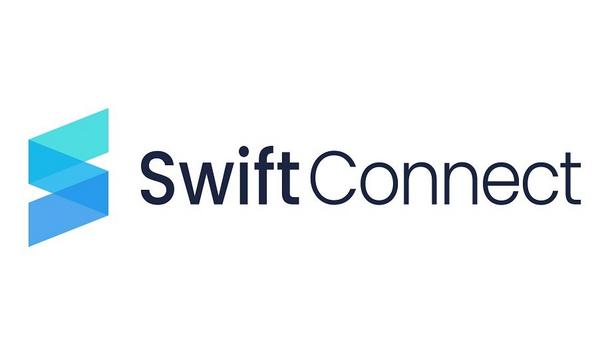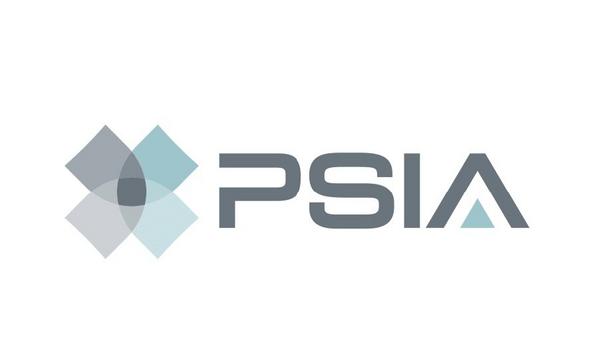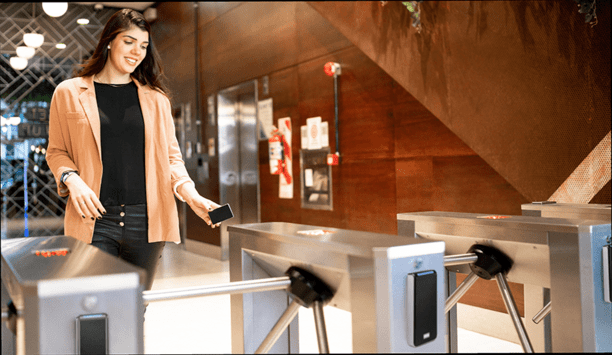Kastle Systems - Experts & Thought Leaders
Latest Kastle Systems news & announcements
Silverstein Properties, a pioneering real estate development, investment, and management firm, and its partners SwiftConnect, Allegion, and Kastle, announced they are live with resident keys in Apple Wallet for all apartment units at a multi-family housing location: Silverstein’s Silver Towers residential property at 606 West 42nd Street in New York City. Silverstein’s residential tenants now have an easy and secure way to add a resident key to Apple Wallet to access the apartment building and unlock their homes with a simple tap of an iPhone or Apple Watch—thus eliminating the need to use a traditional, physical key. Resident key in Apple Wallet The rollout of keys in Apple Wallet marks an important milestone for the U.S. real estate industry “We’re excited to make it easy for our residents to use their resident key in Apple Wallet to get into their buildings, homes, and common areas, which builds upon our previous offering to office tenants who use their employee badge in Apple Wallet to access offices and shared spaces including lounges, cafes, conference facilities, and yoga studios,” said Tal Kerret, President of Silverstein Properties. The rollout of keys in Apple Wallet marks an important milestone for the U.S. real estate industry, as property owners and employers reimagine the home and workplace experience for residents, office tenants, and employees. SwiftConnect’s success: Enhance security for residents “The Silver Towers project builds on SwiftConnect’s success in delivering seamless access via NFC wallets across the most iconic commercial real estate properties in New York and beyond,” said Matt Kopel, co-CEO and President of SwiftConnect. “We are excited to once again partner with Silverstein Properties and to extend our leadership into the multi-family housing market. Now, residents can easily access their personal spaces with their iPhone and Apple Watch, and property teams are able to enhance security for their residents—while also automating the process of managing keys and access.” Modern access-control solution SwiftConnect integrates with the Kastle Access Control platform; Schlage® mobile credentials To provide residential tenants with this experience, SwiftConnect integrates with the Kastle Access Control platform; Schlage® mobile credentials; and access control devices from Allegion™, as well as all other necessary business platforms and systems to create a unified digital network for hassle-free mobile access. “Kastle is thrilled to be a partner on the Silver Tower project, leveraging Kastle’s robust and proven access-control products to create a modern access-control solution that delivers an unparalleled experience both property owners and residents can trust,” said Haniel Lynn, CEO of Kastle. Schlage mobile-enabled wireless locks “We are excited to work with SwiftConnect and play an important role in Silver Tower's resident key in Apple Wallet multifamily housing deployment,” said Mark Casey, Vice President of National Electronic Sales of Allegion. “Resident Keys in Apple Wallet—alongside our Schlage mobile credentials and Schlage mobile-enabled wireless locks—not only enhances security and convenience for residents, but also exemplifies our commitment to driving the future of seamless access and smart apartment technology.” How seamless access works at Silver Towers Tenants can add their resident key to Apple Wallet after an initial set-up through Silverstein’s Inspire app, using SwiftConnect’s AccessCloud platform. Once added, tenants can hold their iPhone or Apple Watch near a door reader or smart lock for seamless access to the apartment building, their home, and shared fitness and amenity spaces. With Express Mode, tenants don’t need to wake or unlock their device to use their resident key—they can simply hold their device near a reader and go. If an iPhone needs to be charged, they can still use their device to access their apartment and amenity spaces with Power Reserve. Resident key in Apple Wallet takes full advantage of the privacy and security features already built into iPhone and Apple Watch. Data is encrypted and protected against tampering and theft, and Apple cannot see when and where a resident uses a home key in Wallet. Silverstein’s holistic customer experience program The new offering falls under Inspire, Silverstein’s holistic customer experience program that reshapes how, when, and where the company’s customers live and work. Inspire brings hospitality services, social and wellness programming, data-driven workplace technology, and a flexible workspace solution under one umbrella. Since its inception 67 years ago, Silverstein Properties has been recognised for driving innovative technology adoption to enhance the tenant experience. The company has built a reputation for developing exceptional projects, enhancing local communities, providing outstanding services to customers and partners, and driving innovation within the industry.
At GSX 2024, the Physical Security Interoperability Alliance (PSIA) will show an expanded roster of devices supporting its Public Key Open Credential (PKOC) specification. PSIA will be showcasing the latest information and demonstrations for PKOC at the JCI Security Products demo room S230 A&B. They will be able to see interoperability following open specifications between mobile and physical credentials from multiple manufacturers with multiple manufacturer readers leveraging Bluetooth, NFC and UWB. Products supporting PKOC from JCI Security Products, Elatec, EMSi, Last Lock, INID, ID Machines, Sentry Enterprise, Secure Element Solutions, Taglio, RF Ideas, SAFR Scan, and Kastle Systems will be demonstrated. PKOC over OSDP devices David Bunzel, PSIA Executive Director, noted, “The PSIA held an interoperability event at the JCI offices in Westford, Massachusetts last month, where some of the new PKOC over OSDP devices were successfully tested. These devices will be part of the GSX demonstrations, showing continued progress with the PKOC specification.” PKOC creates truly secure and interoperable credentials. “PKOC solves a 30-year industry challenge which has plagued our industry with complexity, cost, and security issues,” says Jason Ouellette, Chairman of the Board, Physical Security Interoperability Alliance and Director of Engineering and Technology for Johnson Controls Security Products. PKOC-compliant reader Security industry experts attending GSX will be able to find out more about PKOC at the JCI demo room “Interest in PKOC has accelerated and we are excited as PSIA members to demonstrate this in the context of interoperability where any PKOC-compliant credential can work with any PKOC-compliant reader over a secure communication without complexity." Security industry professionals attending GSX will be able to find out more about PKOC at the JCI Security Products demo room S230 A&B. The PSIA has been active in developing and promoting open specifications that support interoperability in the physical and logical security industries. Realm of physical security Industry publication, Security Technology Executive, declares interoperability “The Next Great Phase of Physical Access Control.” SecurityInfoWatch.com expounds on the predicted demand for PACS interoperability by saying, “Open protocols, standards and industry-accepted conformant products that focus on unbridled interoperability between manufacturers and vendors will be critical as advanced technology, such as analytics and ancillary devices, enter the realm of physical security and access control.”
Doordeck, a cloud-based access control software company, has joined the Board of the PSIA. The company has an innovative product that enables smartphone NFC keyless entry for buildings, regardless of which access control system is installed. The company, based in London, England, was established in 2015, and its products and services have been integrated into buildings throughout the world. It is a subsidiary of Sentry Interactive of Austin, Texas. “Our company is very excited to be joining the PSIA, considering its objective to put interoperability first,” said Marwan Kathayer, Head of Product & Co-Founder of Doordeck. “This aligns perfectly with our mission to provide mobile access software that is easy to integrate into disparate security ecosystems.” PSIA’s PKOC specification Doordeck’s SDK and open APIs allow for interoperability with major access control system works Doordeck’s SDK and open APIs allow for interoperability with major access control system manufacturers, third-party building management and tenant experience applications. The Doordeck software also has the capability to bridge disparate systems within a building or across a portfolio under the one centralised platform. David Bunzel, PSIA Executive Director, shared, “Doordeck is part of a growing number of companies looking to disrupt the access control industry. They recognise that the PSIA’s PKOC specification, with its asymmetric encryption, is superior to many legacy products which continue to rely on symmetric encryption technology. PKOC also offers an NFC card option to support applications where this technology continues to be utilised.” Understanding of PKOC Smart cards, featuring this specification are already available in commercial products The Physical Security Interoperability Alliance (PSIA) and a number of its partner companies will be present at the GSX show in September of 2024. For a better understanding of PKOC, the PSIA has added an Explainer Video to its site. This video is less than a minute and demonstrates how the PSIA’s PKOC specification works and will disrupt the access control market. The PSIA approved its PKOC NFC Card Specification in December of 2023. Smart cards, featuring this specification are already available in commercial products. PKOC is featured in products from ELATEC, Kastle Systems, INID, JCI, Last Lock, rf IDEAS, SAFR Scan (RealNetworks), Sentry Enterprises, and Taglio Demand for PACS interoperability The PSIA has been active in developing and promoting open specifications that support interoperability in the physical and logical security industries. Industry publication, Security Technology Executive, declares interoperability “The Next Great Phase of Physical Access Control.” SecurityInfoWatch.com expounds on the predicted demand for PACS interoperability by saying, “Open protocols, standards and industry-accepted conformant products that focus on unbridled interoperability between manufacturers and vendors will be critical as advanced technology, such as analytics and ancillary devices, enter the realm of physical security and access control.”
Insights & Opinions from thought leaders at Kastle Systems
The Physical Security Interoperability Alliance (PSIA) was founded in 2008 with a goal of creating ‘plug-and-play interoperability’ among physical security devices, systems and services. Since then, the organisation’s mission has both expanded to include logical security and focused more narrowly on identity, a critical aspect of security today. In recent years, PSIA has concentrated on its PLAI (Physical Logical Access Interoperability) specification, which provides a means to enable disparate physical access control systems (PACS) to communicate to each other and share employee identity data. This is especially important for companies who have made acquisitions and inherited different incompatible PACS systems. “PLAI can unify a security environment through one trusted source, even if there are multiple PACS systems,” says David Bunzel, Executive Director of the Physical Security Interoperability Alliance (PSIA). Bridge between disparate PACS The PLAI specification provides a bridge between disparate PACS, allowing a single trusted source for identity management. Leading PACS vendors including JCI (Software House), Lenel, and Kastle Systems and biometric vendors including Eyelock, Idemia, and Princeton Identity, have each implemented PLAI adapters, supporting this specification. AMAG will have their adapter in the coming months, and Honeywell and Siemens have it on their road maps. At ISC West last April, PSIA was able to demonstrate five of these vendors sharing records and the ability to add and terminate an employee and have it updated across each PACS and biometric system. PSIA was able to demonstrate five of these vendors sharing records at ISC West last April The Physical Security Interoperability Alliance (PSIA) has evolved from supporting physical security to also integrating logical security. Access to facilities and secure areas of buildings is increasingly dependent on software and hardware systems which can validate a person’s identity. “The PSIA has chosen to focus on interoperability between identity management systems and access control devices,” says Bunzel. “We have successfully demonstrated the technology, and it is now being specified by consultants, integrators and enterprise customers in actual security systems. We expect to see some large companies announcing PLAI implementations in the next quarter.” Open standards processes PSIA relies on an open standards process, with collaboration among leaders in the various parts of the security industry. Specifications are architected, discussed, drafted, and reviewed by members of the organisation in technical committees. The process is dynamic, with periodic updates added, which will improve and enhance the specifications as appropriate. The PSIA has focused on identity management for enterprise customers, says Bunzel. “We have active members who make devices that support access hardware (for example, locks and biometric systems) who by design complement PACS vendors and HR management systems.” PLAI also enables a variety of services for enterprise customers that may rely on a security credential" “We continue to add more PACS and biometrics vendors to the PLAI ecosystem, expanding the value of the specification in the market,” says Bunzel. “PLAI also enables a variety of services for enterprise customers that may rely on a security credential, including printing services, parking, and facility management. In the near future, the PSIA expects to extend PLAI into elevators. There are other identity management capabilities, and the PSIA will evaluate opportunities as the market demands them,” says Bunzel. In addition to PLAI, PSIA has several ‘legacy’ specs, but they are not actively working on further iterations. PSIA could always consider new development on legacy specs if the market demanded it. Some legacy specs address video, and security cameras often work with access control systems. However, PSIA currently is leaving video to ONVIF. The near-term direction and plan for the PSIA is to focus on PLAI and its commercialisation.
Communicating access control information across multiple platforms is simplified with the PSIA's PLAI specification Managing access control across large companies or institutions, including those that span giant campuses or even multiple locations all over the world, is essential to optimum security. Too often, however, the effectiveness of a company’s access control system – or, more likely, of its multiple access systems that were installed in various locations over time – is limited by an inability to share user names, privileges and other access control information across the enterprise. The Physical Security Information Alliance (PSIA) is looking to solve the challenges of communicating access control information across multiple platforms with its new Physical-Logical Access Interoperability (PLAI) specification. Historically, integrating multiple access control platforms with human resource (HR) or other systems in a corporation required specialised software or custom programming. However, using the new specification, interoperability among systems can be simple and standardised. In effect, PLAI enables employee identities and roles defined or revoked in an authoritative logical identity system to automatically propagate to one or more PLAI-compliant physical access control systems (PACS). PLAI synchronises physical and logical identities and streamlines and standardises functions that typically have required custom programming to achieve. When PLAI is realised and implemented, the end user will be able to enter information including all system users’ names, provisioning and permission levels into an HR system such as PeopleSoft or SAP, and the system will automatically and seamlessly distribute that information to the various access control systems throughout an organisation. Operation of the various access control systems is guided by the information provided from an “authoritative source.” All information is synchronised and normalised among the various systems, even those manufactured by different suppliers. PLAI asserts roles defined by an authoritative source so those roles do not have to be redefined in the PACS. For example, if an employee of a U.S. company were to go to work at that company’s office in the United Kingdom, information from the centralised HR system would ensure the employee’s privileges are current and that his or her access control card can be scanned to open the door at the UK office. PLAI uses existing tools such as Active Directory and LDAP to enable system-wide invoking and revoking of privileges among multiple access control system providers. Centralised cancellation of privileges ensures a higher level of security than requiring that privileges be cancelled multiple times across several access control platforms and/or geographic locations. The new PLAI specification helps multiple systems work together, enhancing security and lowering costs PSIA planned a virtual demonstration (webinar) of the new PLAI specification in mid-November 2014, to illustrate the specification’s ability to enable multiple systems to work together. Although PLAI is still a work-in-progress, tools will be available on the PSIA web site within the next couple of months to guide suppliers to conform to the specification. Several large suppliers, including Tyco, Lenel, Honeywell, Stanley, Assa Abloy, and Allegion, have been involved in developing the specification. Less than a year ago, PSIA’s new chairman, Mohammad Soleimani, executive vice president and CTO of Kastle Systems, proposed the framework for PLAI and led to the formation of the PLAI Working Group. PSIA hopes that the new specification will become a de facto standard, although, at least for now, the organisation is not pursuing official issuance of the specification by a standards organisation such as ISO or ANSI. “We’re following the same procedures required to create a standard, such as publishing documents and going through a comment and review process,” says David Bunzel, PSIA executive director. Going through the process of making PLAI an official standard is expensive and time-consuming, but PSIA would go that route if “the industry determines it’s necessary,”he adds. The goal is to make the specification open, non-proprietary and supportive of industry needs. “This specification, which allows the convergence of logical and physical systems, could be a game-changer in organizations, resulting in enhanced security and lower costs,” says Soleimani.
A modern guide to data loss prevention
Download7 proven solutions for law enforcement key control and asset management
DownloadThe truth behind 9 mobile access myths
DownloadAccess control system planning phase 2
DownloadSecurity practices for hotels
Download











